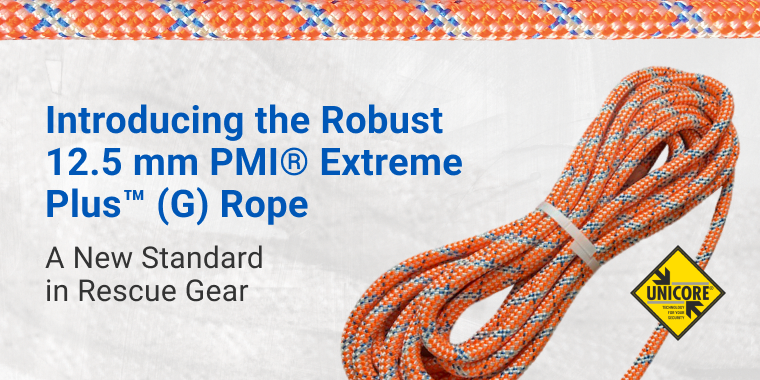Products and Information
Choosing a Rope
Types of Ropes
Static and low stretch ropes are designed for radically different uses than dynamic ropes and therefore have significantly different properties.
Static and low stretch ropes are designed for rappelling, ascending, lowering, and raising operations where the load is supported by the rope and there should never be any slack in the system. These types of uses are common in rescue, rope access, tree work, caving, etc.
Dynamic ropes are designed to absorb shock loads when the slack comes out of a system, as with a falling lead climber in recreational climbing or mountaineering.

Because of these differences, the testing procedures for static and dynamic ropes are very different.
One thing that both types of testing have in common is that the test destroys the rope.
Ropes tested are considered a representative sample of the ropes actually sold and put into use.
In both types of testing, multiple samples are tested to gauge the consistency of the results.
“developed test criteria”
The Cordage Institute in the United States has developed test criteria for static and low stretch ropes.
In this test, rope strength is testing by wrapping the ends of the rope around 4-inch (or greater) bollards, and pulling at about 6 inches per minute.
A load cell measures the force applied to break the rope.
Testing to a common industry standard test allows the relative strength of different ropes to be compared.
It does not predict the actual load that would necessarily break a rope in a real application.
That would depend on many factors including; the condition and previous use of the rope,
the knots used to tie the rope, the shape of the surfaces that the rope runs across (tighter bends and sharp edges reduce the breaking strength),
and the rate at which the load is applied.
Even though traditional nylon kernmantle low stretch and static ropes stretch very little,
they do have some ability to absorb energy in a system. They do stretch a bit.
According to Cordage Institute standards (CI 1801), any rope labeled as ‘Static’ will have an elongation of <6% at 10% of it’s MBS.
A rope labeled ‘Low Stretch’ should have an elongation of 6-10% at 10% of it’s MBS.
These and other factors should be taken into account when choosing and rigging a static or low stretch rope.
Rope rigging training should include discussions of limitations and capabilities of different types of rope.
“ropes are tested by counting the number of times”
Dynamic ropes are tested by counting the number of times they can safely stop a falling test weight when dropped from a specified height.
Also, the rope must stop the falling test weight without exceeding a specified load (12kN).
That is, dynamic ropes have to be able to stop a falling climber but not stop the climber so fast that injury results.
This ability of dynamic ropes to “gradually” stop a fall are the main reason that static and low stretch ropes must never be used in applications where slack may develop in a system. Testing dynamic ropes by pulling them on a tester until they break is not practical due to the high amount these ropes stretch before breaking.
Be sure to use the right rope for your application.




0 comment